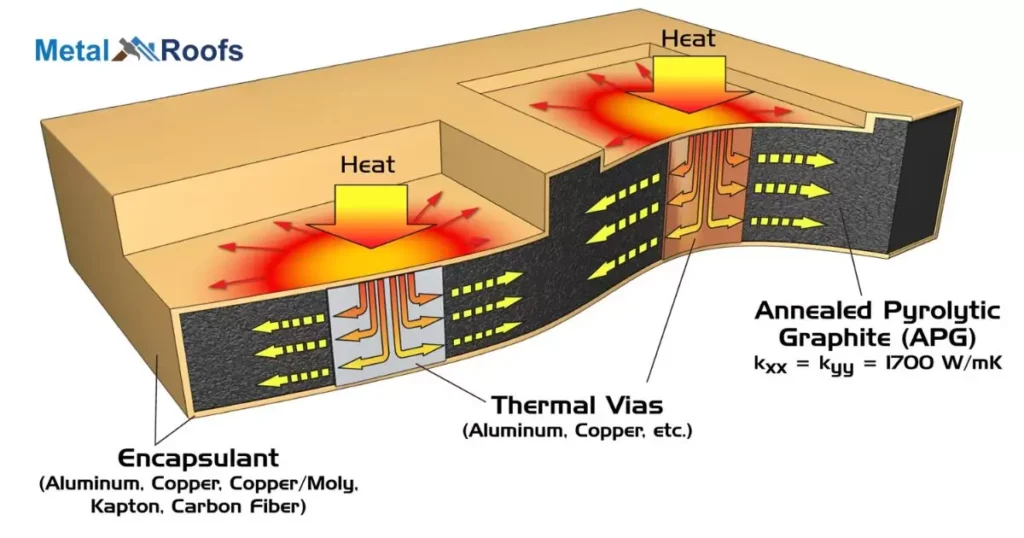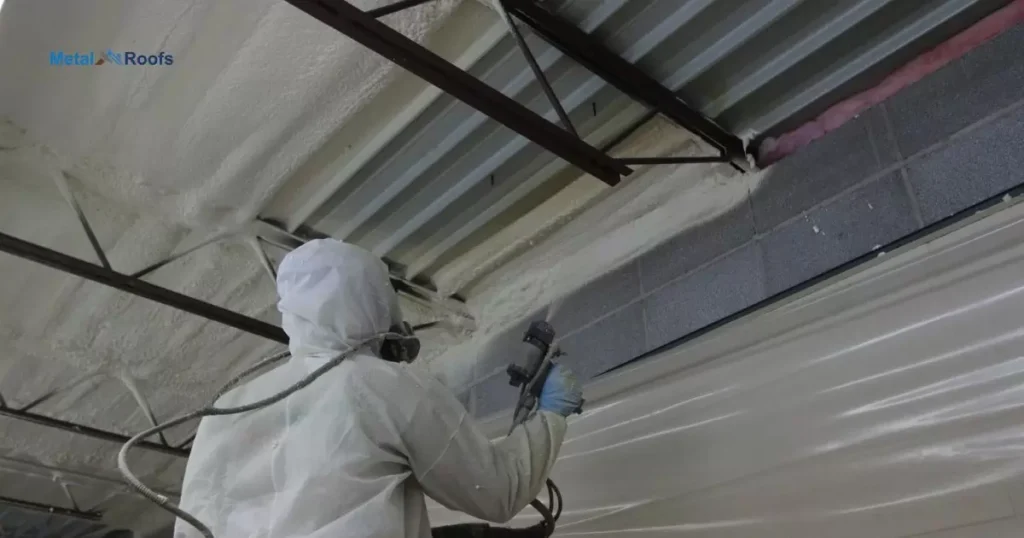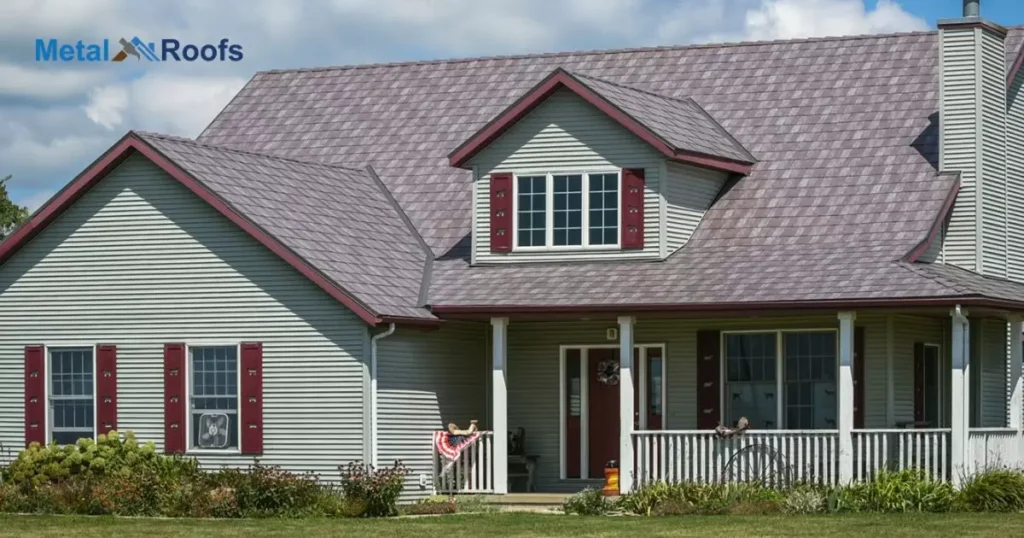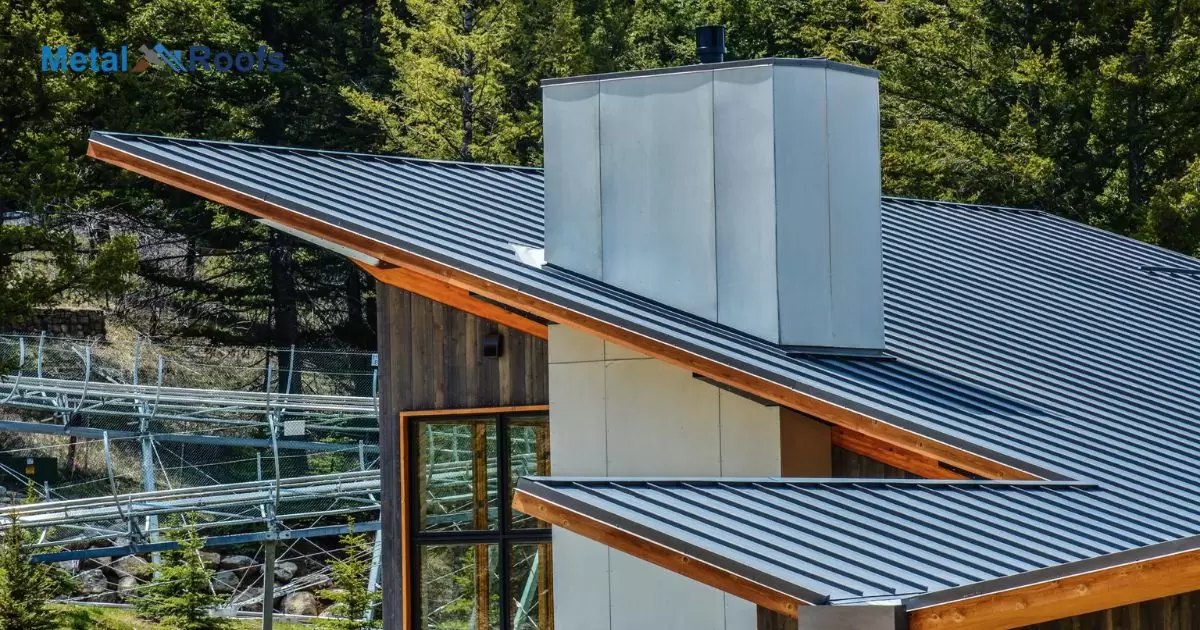Metal roofs expand and contract with temperature changes. This causes the metal panels and fasteners to rub against each other making popping or cracking sounds. This thermal movement noise is normal for metal roofs.
Metal roofs move as temperatures rise and fall. The metal panels expand and contract. This rubs the panels against clips and fasteners. It makes popping or cracking noises. This common thermal movement is called metal roof thermal expansion noise. Don’t worry, it’s normal.
The metal panels heat up in sunlight and cool at night. The expansion and contraction loosens their clips and fasteners. As they move against each other, they generate cracking or popping sounds. This is metal roof thermal expansion noise. It is caused by thermal movement that is expected. The noise is normal for metal roofs.
Key Takeaways
- Metal roofs can generate thermal expansion noise due to temperature fluctuations.
- Proper insulation installation reduces noise transmission effectively.
- Regular maintenance can identify and address issues contributing to thermal expansion noise.
- Choosing materials with lower coefficients of thermal expansion minimizes noise levels.
- Incorporating expansion joints in roof design helps control movement and lessen stress on the structure.
What is Thermal Expansion Noise?
Thermal expansion noise happens when metal roofs expand and contract due to temperature changes. When the sun heats the roof, metal panels expand, and when it cools, they contract.
To mitigate popping or creaking sounds caused by temperature shifts, it’s vital to invest in proper installation and materials with lower thermal expansion coefficients. This consideration is especially important when factoring in the metal roof cost in florida.
Causes Of Thermal Expansion Noise In Metal Roofs

Temperature Changes: Thermal expansion noise in metal roofs can be reduced using soundproofing techniques such as insulation and acoustic barriers.
Material Properties: The type of metal used, its thickness, and profile influence the extent of thermal expansion noise.
Design and Installation: Factors such as the roof’s design, slope, and the adequacy of fasteners impact the susceptibility to thermal expansion noise.
Regional Climates: Regions with significant temperature fluctuations experience more pronounced thermal expansion noise.
Structural Stress: The expansion and contraction of metal panels can stress fasteners and structural components, leading to audible sounds.
Mitigation Strategies: Proper installation, material choice, and maintenance reduce thermal expansion noise in metal roofs. Adding metal roof sound insulation enhances noise reduction and comfort.
Reduce Thermal Expansion Noise in Metal Roofs
| Strategy | Description |
| Proper Installation | Ensure fasteners are secure, allow room for movement, and choose materials with lower expansion rates. |
| Insulation | Use insulation to dampen sound transmission between panels and the structure, and regulate temperature. |
| Regular Maintenance | Inspect for loose components or damage and address them promptly to prevent exacerbation of noise issues. |
| Incorporate Expansion Joints | Design the roof with expansion joints to accommodate thermal movement and reduce stress on fasteners. |
To minimize thermal expansion noise in metal roofs, start with proper installation. Ensure fasteners are secure, allowing room for movement. Choose materials with lower expansion rates to decrease noise levels.
Consider insulation to dampen sound transmission between panels and structure. Regular maintenance is key, especially in regions where metal roofs noisy may be a concern. Incorporate expansion joints into the roof design for controlled movement to reduce thermal expansion noise in metal roofs.
Proper installation of metal roofs

Proper installation of metal roofs is crucial for ensuring their durability, longevity, and effectiveness in protecting the building. Here’s a general guideline for installing metal roofs:
Prepare the Roof Surface:
- Ensure that the roof decking is in good condition and free from any rot or damage.
- Remove any existing roofing material, such as shingles, and make sure the roof surface is clean and smooth.
- Repair any damaged or rotted sections of the roof decking before proceeding.
Install Underlayment:
- Lay down a suitable underlayment to serve as a moisture barrier between the metal roofing and the roof decking.
- Common types of underlayment include synthetic felt, asphalt-saturated felt, or self-adhering membranes.
- Properly secure the underlayment to prevent any wrinkles or tears that could compromise its effectiveness.
Install Flashing:
- Install metal flashing around roof penetrations such as chimneys, vents, and skylights to prevent water infiltration.
- Ensure that flashing is properly sealed and securely attached to the roof decking.
Install Roof Panels:
- Start at one end of the roof and work your way across, laying the metal panels according to the manufacturer’s instructions.
- Use appropriate fasteners recommended by the manufacturer. These are typically screws with rubber washers to prevent water penetration.
- Install panels with the proper overlap to ensure water shedding and to prevent leaks.
- Cut panels to size as needed, ensuring precise measurements and clean cuts.
Secure the Ridge and Hip:
- Install ridge caps along the peak of the roof and hip caps along the hip lines to provide a finished look and further prevent water intrusion.
- Secure ridge and hip caps with screws or other fasteners recommended by the manufacturer.
Check for Proper Ventilation:
- Ensure that the roof system includes adequate ventilation to prevent moisture buildup in the attic space.
- Install ridge vents, soffit vents, or other ventilation components as necessary to promote airflow.
Inspect and Clean Up:
- After installation, thoroughly inspect the roof for any loose fasteners, gaps, or other potential issues.
- Clean up any debris from the installation process to prevent it from becoming a hazard or causing damage to the roof.
Follow Manufacturer’s Guidelines:
- Always refer to the specific installation instructions provided by the manufacturer of the metal roofing materials.
- Following these guidelines is essential for proper installation and to maintain any warranty coverage.
Consider Hiring a Professional:
- While installing a metal roof can be done DIY, it’s often best to hire a professional roofing contractor with experience in metal roofing installation for optimal results.
- By following these steps and paying attention to details, you can ensure a proper installation of metal roofs that will provide long-lasting protection for your building.
Insulation and Thermal Expansion Noise

Insulation mitigates thermal expansion noise in metal roofs by acting as a barrier between panels and the structure. This reduces sound transmission and regulates temperature to minimize fluctuations, effectively stopping thermal expansion noise.
Importance Of Insulation In Reducing Thermal Expansion Noise
Insulation is key. It stops noise transmission. Metal roofs expand, yes. But insulation dampens the noise. Choose proper insulation. It reduces thermal expansion noise. Make sure it’s installed correctly. Insulation lessens the impact.
Types Of Insulation For Metal Roofs
Spray Foam Insulation: Applied directly to the underside of the roof decking, spray foam provides excellent thermal performance and creates an airtight barrier.
Reflective Insulation: Reflective roofing is great for warmer climates, but some roofs may make popping sounds due to temperature changes. This is usually not a concern unless there are other signs of damage.
Fiberglass Insulation: Commonly used in batts or rolls, fiberglass provides cost-effective thermal resistance when installed between roof joists or rafters.
Mineral Wool Insulation: Known for its fire resistance and sound absorption, mineral wool is available in various forms and provides effective thermal insulation.
Rigid Foam Insulation: Offering high thermal resistance, rigid foam can be installed above or below the roof decking and is lightweight and moisture-resistant.
Radiant Barrier Insulation: Installed under the roof decking, radiant barrier insulation reflects radiant heat away from the building, complementing other insulation types for comprehensive thermal protection.
How Insulation Affects Thermal Expansion Noise?
Insulation is crucial for reducing metal roof noise. Choose proper sound-dampening insulation to minimize thermal expansion noise effectively.
Common Misconceptions About Thermal Expansion Noise In Metal Roofs

Structural Problems: People might think the noise indicates structural issues, but it’s typically normal.
Installation Quality: Some believe it’s a result of poor installation, but even well-installed roofs can experience thermal expansion noise.
Mitigation Difficulty: Contrary to belief, techniques like noise-reducing insulation can help reduce noise levels.
Temperature Dependency: While more noticeable in extreme temperatures, thermal expansion noise can occur in regular conditions.
Damage Indication: There’s a misconception that the noise signifies roof damage, but it’s usually harmless.
Inevitability: While metal roofs expand with temperature changes, proper installation and materials can minimize noise significantly.
Frequently Asked Questions
Do metal roofs make noise when heating up?
Yes, they can. Metal roofs expand when heated, causing noise.
What is the thermal expansion sound on a roof?
It’s the popping or creaking noise. Happens when metal roofs expand.
How can you reduce noise caused by thermal expansion?
Proper insulation helps. It dampens thermal expansion noise.
Conclusion
Metal roofs expand when hot. They contract when cool. The movement makes noise as panels rub fixtures. This thermal expansion noise is normal. It does not harm the roof or indicate a defect.
Do not worry about minor metal roof noises. The expansion and contraction will persist. As temperature changes daily, the panels move. This causes inevitable rubbing and sounds. Accept the noise as typical for metal roofing materials.











